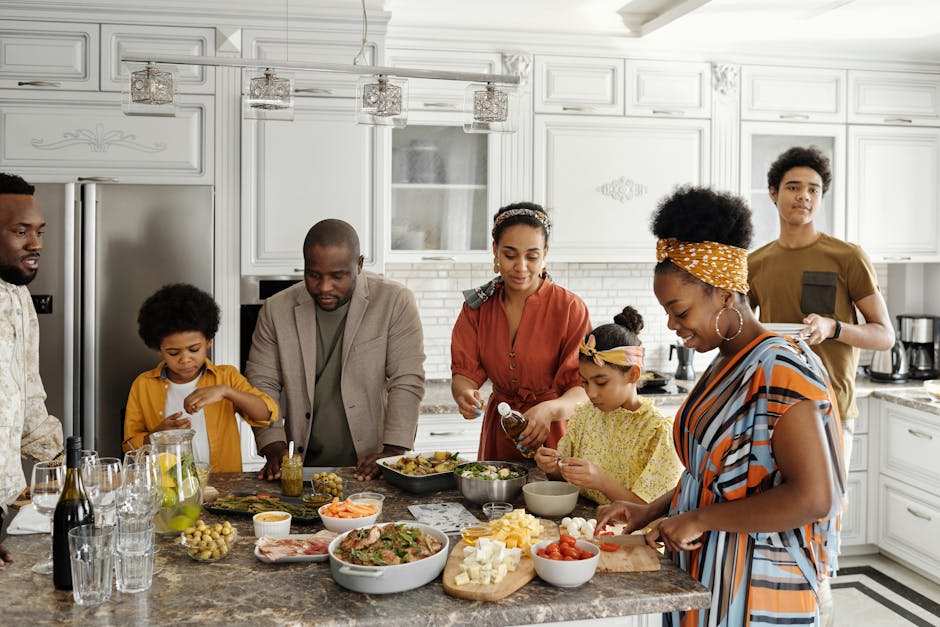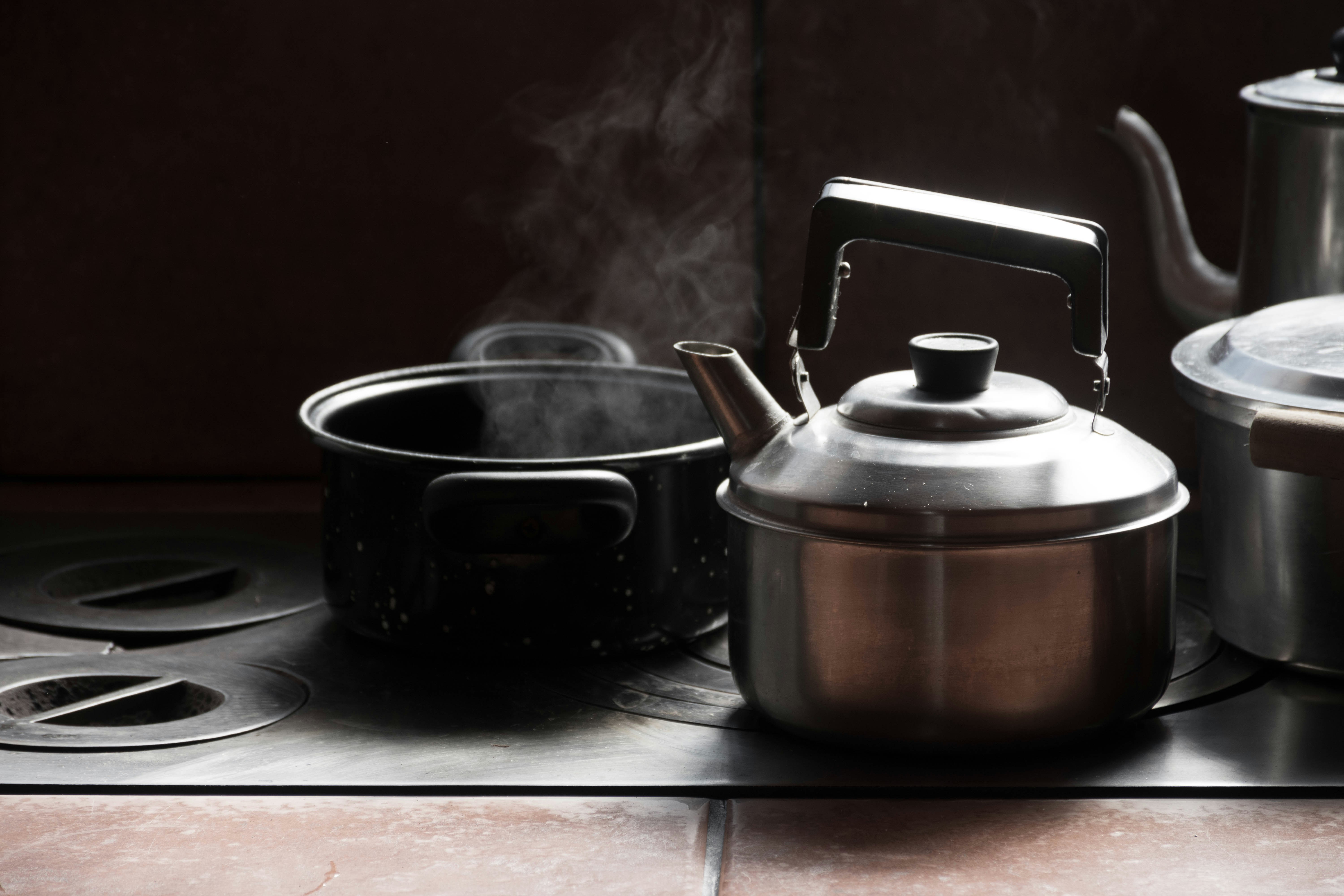Flavor Expeditions: Explore Culinary Influences with Global Ingredients
In our modern culinary landscape, the world feels smaller than ever, and with it, our opportunities for flavor explorations abound. As home chefs, many of us are empowered by easy access to exotic ingredients, which invites us to not only experiment with but also celebrate diverse culinary traditions in our everyday cooking. This article, "Flavor Expeditions: Mapping Culinary Influences Through Contemporary Global Ingredients," navigates the exciting terrain of global flavors, revealing how unique ingredients tell cultural stories while transforming our recipes into masterpieces of fusion.
Discovering the Art of Flavor Pairing

At the heart of any culinary adventure lies the delicate art of flavor pairing. Let's embark on our expedition by understanding how to select and harmonize diverse ingredients from around the globe. Picture yourself in a bustling market in Marrakech, surrounded by vibrant spices and fresh produce. The scent of saffron and the sweetness of fresh figs entice you to think differently about your next meal. Learning how these elements interact is essential for achieving balance in your cooking style.
When pairing flavors, consider the following principles:
-
Cultural Context: Experience flavors deeply rooted in culinary traditions provides context to your ingredient choices. For instance, basil is not just an herb; it's a cornerstone of Italian cuisine that pairs beautifully with tomatoes and garlic. By understanding where flavors originate, you can create authentic dishes that resonate with food lovers.
-
Contrasting Textures: Combining smooth with crunchy can elevate a dish dramatically. Think of a velvety coconut curry adorned with crispy shallots and toasted peanuts. This tantalizing duo encourages a dynamic eating experience.
-
Balance of Flavor Profiles: Sweet, salty, sour, bitter, and umami—understanding how these profiles interact is invaluable. Using ingredients with contrasting tastes can enliven your culinary creations. Try incorporating features of Japanese cuisine by pairing miso (umami) with honey (sweet) for a glaze that adds depth to grilled vegetables.
For an in-depth exploration of flavor profiles and cultural narratives, don't miss our article on Decoding Flavor Profiles.
Ingredients With Stories: Embracing Cultural Influences

As you embark on your flavor expedition, each ingredient opens a door to a culinary world steeped in history and tradition. For instance, the versatile quinoa, which originated in the Andean region, is not just a superfood but a symbol of resistance and resilience. Incorporating quinoa into an experimental dish, such as a spiced quinoa salad topped with North African ras el hanout, tells a story of cultural fusion.
Likewise, ingredients like saffron, a spice derived from the crocus flower, offer not only a unique flavor but also insight into their historical significance. Saffron's value once rivaled gold, and its delicate nature requires meticulous harvesting. Infusing your dishes with saffron can evoke the culinary magnificence of Persian and Mediterranean kitchens.
Driven by this narrative, explore the idea of crafting dishes inspired by the heroes of these culinary stories. Combine ingredients like shrimp, coconut milk, and lime zest to create a dish that pays homage to Southeast Asian cuisine while inviting your personal touch.
Finding Harmony in Your Kitchen

Achieving harmony in your cooking doesn't just hinge on the perfect balance of flavors; it's also about intuition and intention. As you explore new recipes and experiment with global ingredients, consider the following tips to elevate your culinary creations:
-
Mindful Cooking: Cultivating mindfulness while preparing meals allows you to connect more deeply with the ingredients. Slow down, observe textures and aromas, and think about how they contribute to your dish. This adds nuance and soul to your cooking.
-
Experiment with Fermentation: Fermented foods, like kimchi or miso, can amplify flavors while enhancing health benefits. Discover unique flavor pairings through fermentation to elevate your dishes and offer restaurant-quality results at home.
-
Celebrate Seasonal Ingredients: Understanding the natural rhythms of produce can lead to incredibly fresh and vibrant dishes. Embrace the idea of cooking with 'now' and integrating seasonal ingredients in your recipes. Consider using crisp, seasonal asparagus in a lemon-tahini sauce inspired by Mediterranean cuisine.
-
Be Adventurous with Fusion Cuisine: Fusion cooking allows you to break barriers and combine distinct culinary traditions. Think of a pad Thai reimagined with Italian ingredients by incorporating sun-dried tomatoes and Parmesan alongside the traditional peanuts.
This exploration of global culinary influences may inspire you to try mapping your own culinary cartography, which prompts creativity and global exploration.
Innovative Recipe Ideas to Try

Now that you're immersed in multi-faceted ingredient narratives and intentional harmonizing, let’s delve into innovative recipe ideas that embody this fresh perspective on international cuisine:
Mediterranean-Mexican Taco Bowl

Combine the rich traditions of Mediterranean and Mexican cuisine with a taco bowl featuring:
- Quinoa Base: Use quinoa as a hearty base instead of rice.
- Spiced Lamb: Incorporate ground lamb seasoned with cumin, cilantro, and smoked paprika.
- Toppings: Use fresh tzatziki sauce, crunchy lettuce, tomatoes, and crumbled feta.
Indian-Inspired Coconut Curry Risotto
Dive into the world of Indian flavors with a creamy risotto that tantalizes the palate:
- Sauté Onions & Garlic: Start with onions and garlic, then add arborio rice.
- Add Coconut Milk & Stock: Gradually add coconut milk and vegetable stock.
- Spices: Stir in turmeric, cumin, and garam masala for warmth.
- Finishing Touches: Top with fresh cilantro and a squeeze of lime.
This dish embodies the marriage of the Italian risotto technique with the spices of Indian cuisine.
Sweet-Savory Moroccan-Inspired Beet Salad
Celebrate what the Earth has to offer with this vibrant, colorful salad:
- Roasted Beets: Roast fresh beets until tender.
- Add Citrus and Nuts: Toss in segments of orange, and sprinkle with toasted walnuts.
- Dress with Honey & Harissa: Drizzle with a dressing made from honey, harissa, and a touch of olive oil.
This stunning juxtaposition of sweet, tangy, and spicy flavors tells a story reflective of Moroccan culinary roots.
Middle Eastern Chickpea Pancakes with Indian Spices
Experience the texture and flavor nuances with these creative pancakes:
- Chickpea Flour: Use chickpea flour as a base.
- Seasoning: Infuse with spices like cumin, coriander, and chili powder.
- Serve: Pair with a refreshing cucumber-mint yogurt on the side.
These pancakes seamlessly marry the influences of Middle Eastern and Indian cuisines, offering a dish rich in flavor and cultural resonance.
For more adventurous cooking techniques and tips, consider reading our guide on cooking with intuition to transform your kitchen practices.
Building a Culinary Community
As you explore global flavors and experiment in your kitchen, consider inviting others along for the journey. Sharing recipes and ideas can help build a community that fosters creativity and sustains cultural heritage. Host a potluck featuring international dishes, encouraging friends to bring culinary creations that reflect their cultural backgrounds.
By sharing experiences and flavor stories, you not only cultivate gastronomic knowledge but also forge deeper connections with one another through food. Remember, every bite shares a narrative.
Final Thoughts: Your Flavor Expedition Awaits
The world of flavors is vast and inviting, encouraging exploration and innovation among home chefs seeking authenticity and adventure. As you map out your culinary journey through contemporary global ingredients, consider the stories that accompany each flavor, the cultures they represent, and how they can inspire your creative cooking.
Embrace the excitement of mixing global traditions and ingredients, and don't shy away from experimenting with flavors you might not often encounter in your kitchen. Each meal becomes an expedition, an exploration of taste, aroma, and culture.
Let this be your invitation to embark on your own flavor expeditions—after all, your kitchen is your canvas, and every ingredient tells a story waiting to be discovered.



